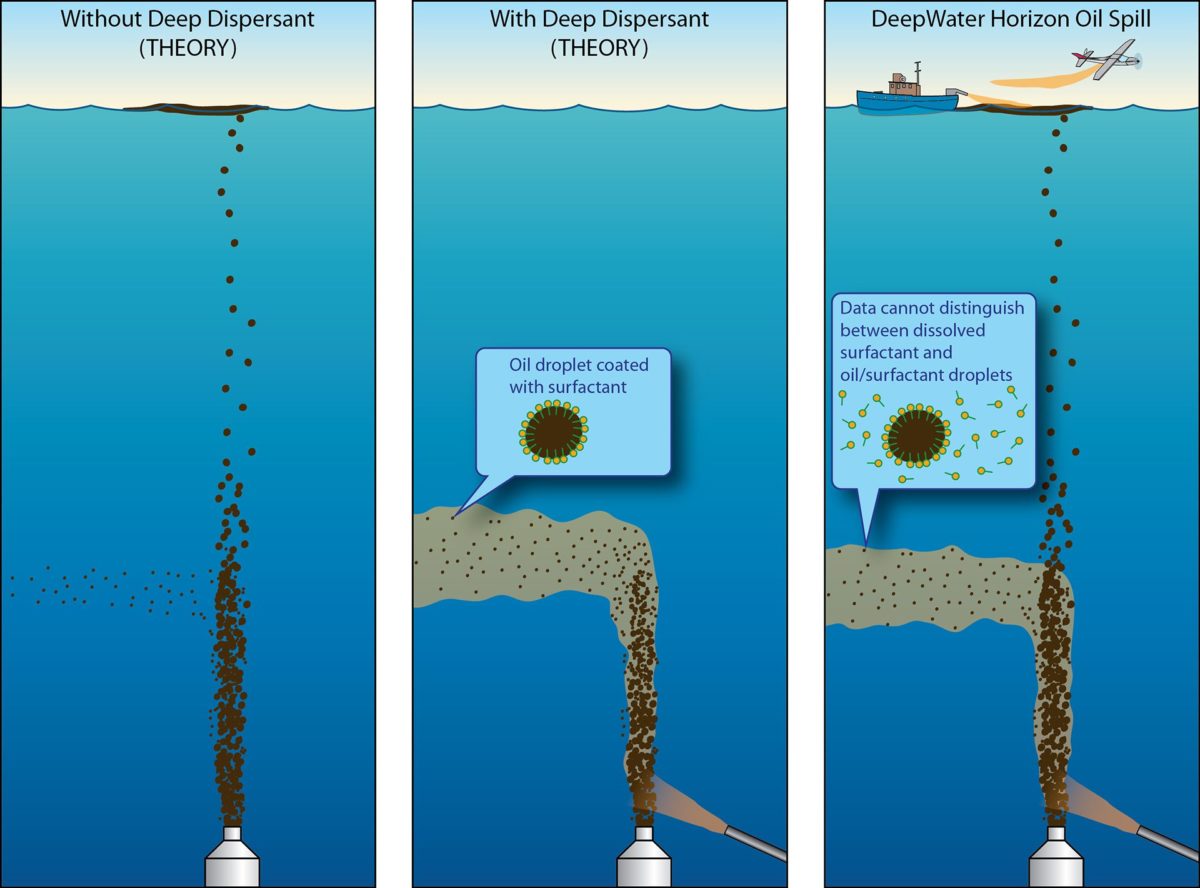Deep Water Horizon oil spill dispersant theory scenarios
When oil and gas mixtures are ejected from a deep wellhead, liquid oil droplets of many different sizes form and rise toward the ocean surface. Because the smaller droplets become as dense as the surrounding water deep below the surface–in this case at about 1,100 meters—they are swept away laterally by prevailing ocean currents (left panel) When a dispersant is added at the depth of the wellhead, a component called a surfactant breaks up the oil into small droplets (middle panel) If the dispersant works perfectly, virtually all the liquid oil is in these “neutrally buoyant” droplets and is carried away before ever reaching the surface and the droplets become small enough to be consumed, or “biodegraded,” by bacteria. In the Deepwater Horizon spill (right panel), scientists found evidence that the dispersant mixed with the small droplets in the deep-water hydrocarbon plume but also discovered the oil/dispersant mix had not yet biodegraded several months after the spill. The study could not distinguish between oil droplets coated with surfactant (which would suggest the dispersant worked as planned) and surfactant floating freely on its own (suggesting the substance did not attach to the oil, as intended) (Illustration by Jack Cook, © Woods Hole Oceanographic Institution)
Image and Visual Licensing
WHOI copyright digital assets (stills and video) contained on this website can be licensed for non-commercial use upon request and approval. Please contact WHOI Digital Assets at images@whoi.edu or (508) 289-2647.

